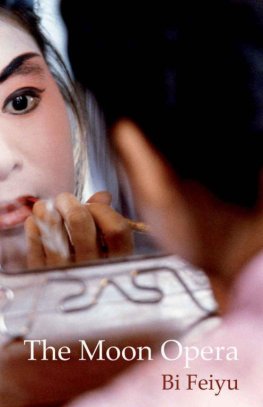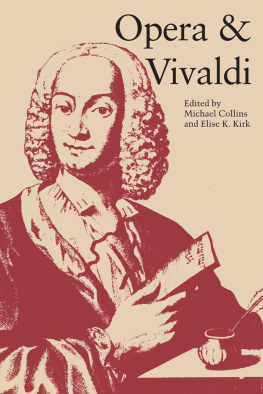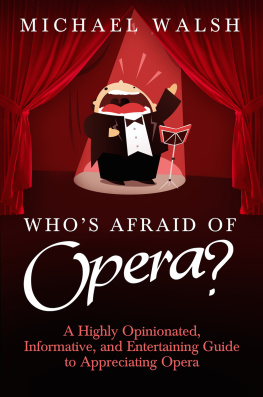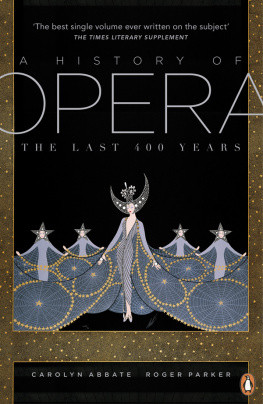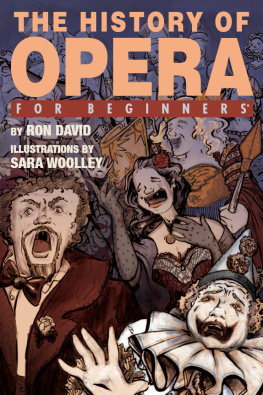

Verse from Leoncavallos Pagliacci in the Introduction EMI Recording, Electrical Musical Industries (U.S.) Ltd. 1954. Courtesy of EMI Classics.
Copyright 1994 Fred Plotkin
All rights reserved. Except as permitted under the U.S. Copyright Act of 1976, no part of this publication may be reproduced, distributed, or transmitted in any form or by any means, or stored in a database or retrieval system, without the prior written permission of the publisher. For information address Hyperion, 1500 Broadway, New York, New York 10036.
The Library of Congress has catalogued the original print edition of this book as follows:
Plotkin, Fred.
Opera 101 : a complete guide to learning and loving opera / by Fred Plotkin.
p. cm.
Includes bibliographical references, discography and videography, and index.
ISBN-10: 0-7868-8025-2
ISBN-13: 978-0-7868-8025-6
OperasAnalysis, appreciation. I. Title.
MT95.P675 1994
782.1dc20 94-9477
CIP
MN
eBook Edition ISBN: 978-1-4013-0600-7
First eBook Edition
Original paperback edition printed in the United States of America.
www.HyperionBooks.com
Tuscany and Umbria: The Collected Traveler
Italy for the Gourmet Traveler
Classical Music 101
La Terra Fortunata
Recipes from Paradise
Italy Today: The Beautiful Cookbook
Eating Healthy for a Healthy Baby
The Authentic Pasta Book
FOR ANDREI MARK, WHO IS A PART OF THIS BOOK IN SO MANY WAYS
One cannot help falling in love with opera all over again reading this book. I also venture to say that if someone is a stranger to opera, he or she will have become a convert by the final page.
Fred Plotkin asks his readers to open their hearts without inhibitions to let music flow through them. That, indeed, is the real secret to becoming a music enthusiast, because reacting emotionally to music is more important than analyzing it mentally. But in order to break down all the barriers, the writerin brilliant fashionfirst guides the reader through a discussion of many different aspects of opera until a better understanding of it is achieved. Just a look at the table of contents shows the reader that by the end of the book many topics will have been discussedthe origin and history of opera (from Baroque court opera to present-day composers such as John Corigliano, Philip Glass, and even Stephen Sondheim), the excitement of going to the opera, the drama and the comedy in opera, Italian opera in contrast to French opera, the path from chamber opera to grand and even epic opera, a history of important opera houses, a guide of important recordings and videos, and suggestions for books or periodicals to read about this art form and its artists.
Ive spent practically my entire life with music and in the theater (having been born to parents who were zarzuela performers), and I can say honestly that nothing in this book was redundant for me but proved a fascinating journey through the world that means so much to me.
P LCIDO D OMINGO
Just as an opera is the product of the participation and goodwill of many individuals, a book such as this one has been made better by the assistance the author received from many kind people.
Brian Kellow was a faithful source of advice and humor as the book was being written. At a crucial point during the books development, the manuscript was read by Nancy Bachrach, Jennifer Josephy, Valerie Saalbach, Marylis Sevilla-Gonzaga, and Len Horovitz. All provided valuable insights when they were most needed.
Alison Ames of Deutsche Grammophon, Nancy Zannini of Philips, Tony Caronia of EMI/Angel, and Sean OSullivan of CBS/Sony offered early help as the musical selections for this book were being made. Thanks also to the press representatives of BMG, Deutsche Grammophon, EMI/Angel, London/Decca, Philips, and Teldec.
The press and education departments of many major opera companies were also quite helpful, especially the following: the Metropolitan Opera, the New York City Opera, the Lyric Opera of Chicago, the Santa Fe Opera, the San Francisco Opera, the Los Angeles Music Center Opera, the Dallas Opera, the Houston Grand Opera, the Icelandic Opera, il Teatro alla Scala, il Teatro Comunale di Bologna, il Teatro La Fenice di Venezia, the Rossini Festival of Pesaro, the Royal Opera House at Covent Garden, and the Royal Danish Opera.
I was able to construct the detailed listing of the worlds opera houses with help from the national tourist offices and consulates of the nations I included.
Special thanks to Edward Sorel, the artist who created this books cover, and Plcido Domingo, who wrote the foreword. Each man synthesized and expressed the many ideas in Opera 101 with concision and great feeling. They made me see yet again why I love opera so. Edgar Vincent, Paul Garner, James Cope, and Henry Cuevas also deserve my thanks.
David Black, my tenacious yet tender agent, and his able staff, Lev Fruchter and Susan Raihofer, are constant sources of support and advice. They bring much happiness to my life as an author.
Richard Kot, this books editor, shares my love of opera, of words, and of a good laugh. He arrived in this books life like a great operatic knight, turning a potential ugly duckling into a lieber Schwan. He has my great admiration. Patrick Dillon was the knowledgeable and sensitive copy editor of Opera 101. He sets a standard of excellence that others should aspire to. Particular thanks also to David Cashion, and to all the other people at Hyperion who worked on this book.
Finally, my mother, Bernice, my father, Edward, and my grandmother Rose surrounded me with love and music in my very young years. Because of them, opera has given me a lifetime of pleasure and fulfillment that I am happy to share with others.
S i pu? May I?
This is what Tonio, one of the itinerant players in Leoncavallos Pagliacci, asks the public before the opera begins. While the curtain is still down, he says, permit me to step forward to speak to you, the audience, and tell you about the special world you are about to enter. And now I, as your guide to the passionate, exotic world of opera, invoke Tonio in asking your indulgence for a few words before we begin our journey.
The fact that you chose to read this book means that you have become interested in opera and would like to start learning more about it. The best way to do this is to have a knowledgeable friend teach you about it. The important thing to know is not only which opera to see first but how to see it. To launch a person on a lifetime of operagoing takes a lot of time and effort, and not every friend has the resources to do that. So I hope you will consider me that friend and let me guide you. I have introduced many people to opera and have developed a method which is the basis of this book. When my friend Susan wept twice during her first opera, Rigoletto, I saw again how a person who is well prepared for her first performance, yet allows herself to be open to whatever happens once the curtain rises, can have a memorable experience that will be the first of many treasured nights at the opera.
To paraphrase Anna Russell, whose priceless comic routines on disk and video you should hear once you become an opera regular, the beauty of opera is that you can do anything you want as long as you sing it. To the person with only a casual knowledge of opera, this art form is riddled with clichs such as overweight sopranos, bellowing tenors, preposterous plots, and long hours spent crammed into uncomfortable seats. While these clichs do represent a small segment of opera, they do not in any way suggest what is beautiful and glorious about it.
Next page

